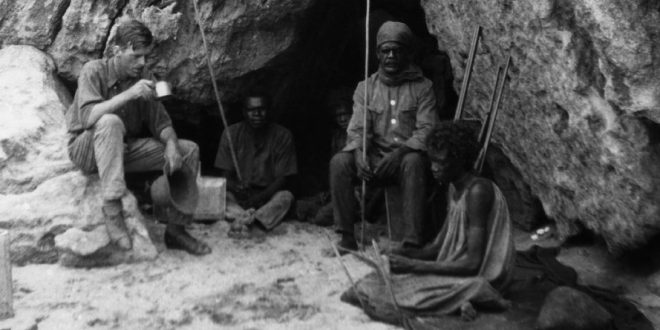Historic hair samples collected from Aboriginal people show that following an initial migration 50,000 years ago, populations spread rapidly around the east and west coasts of Australia.
“The mitochondrial dates reported here for Aboriginal Australian arrival and dispersal appear considerably older than recent estimates from nuclear genomic data that suggest a single ancestry population started to differentiate as recently as [10,000 to 32,000 years ago],” Australian Centre for Ancient DNA Director Alan Cooper, senior author on a study out in Nature today, and his co-authors wrote.
Cooper led an international team that sequenced mitochondrial DNA in more than 100 Aboriginal Australian samples collected between the 1920s and 1970s, after obtaining consent from participants or their living family members. A phylogenetic analysis of these and other available mitochondrial sequences placed early Aboriginal populations in Australia at around the time it was still connected to New Guinea, subsequently splitting into groups that migrated down the country’s coasts and diverged.
“Amazingly, it seems that from around this time the basic population patterns have persisted for the next 50,000 years, showing that communities have remained in discrete geographical regions,” Cooper said in a statement, noting that the study “provides compelling support for the remarkable Aboriginal cultural connection to country.”
He and his colleagues used Illumina HiSeq, MiSeq, and NextSeq instruments to sequence mitochondrial DNA isolated from 111 locks of hair collected from individuals in half a dozen Australian locations and stored at the South Australian Museum collection. They identified 54 mitochondrial haplotypes from five main haplogroups.
When analyzed alongside dozens of existing Aboriginal Australian or Melanesian mitochondrial sequences, the team’s phylogenetic analysis of the mitochondrial sequences from their hair samples hint that the individuals share a most recent common ancestor going back some 43,000 to 47,000 years.
The researchers also delved into relationships within the Aboriginal Australian phylogeny, and used their haplogroup data to retrace migrations down the east and west coasts of the country as Aboriginal populations started to split and diverge.
“The marked population structure of deeply diverged Aboriginal Australian mitogenomes appears to date back to the original arrival of people on the Australian part of the Sahul,” Cooper and his co-authors wrote. “These patterns are surprising given the pronounced environmental changes that have occurred since initial colonization.”
These results are part of the first stage of an ongoing Aboriginal Heritage Project. The effort will reportedly have genealogical and artifact repatriation components and will include nuclear DNA sequencing. It is being done with input from Aboriginal elders and community members, Genographic Project researchers, and bioethicists.
Agencies/Candajournal
 Canada Journal – News of the World Articles and videos to bring you the biggest Canadian news stories from across the country every day
Canada Journal – News of the World Articles and videos to bring you the biggest Canadian news stories from across the country every day



